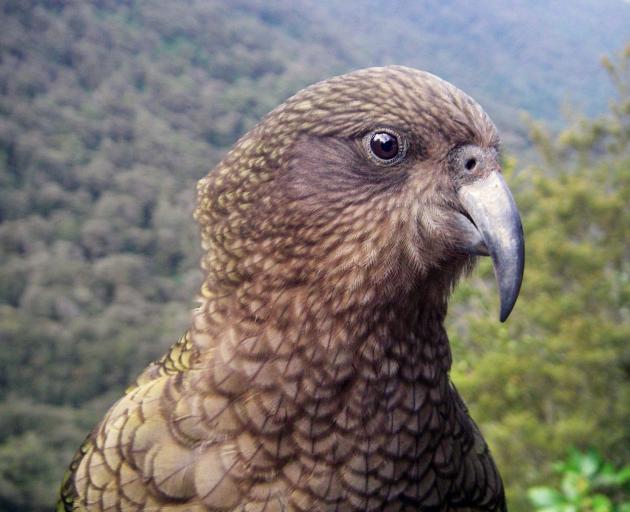
Keea, keeea. The familiar call across the valleys and ridges of the South Island mountains becomes fainter.
Kea numbers have fallen, now to an estimated 3000 to 4000 and fears for this native parrot heighten.
For how many more years will kea soar above schist and tussock, flashing their orange underwing, tormenting alpine campers and entertaining tourists?
Alarmed by the bird's plight, Federated Mountain Clubs and the Kea Conservation Trust organised the recent Kea Konvention at Arthurs Pass. We should share their concern.
It is sometimes said kea should be our national bird. Rather than the drab, brown and flightless kiwi, our emblem would be among the most intelligent creatures, a majestic beast capable of solving puzzles, co-operating in mini-gangs and instigating mischief. Throw a rock in the direction of a kea and it is likely to hop out of the way, squawk and then skip back to where it was, as it taunts and teases.
Many a mountaineer has stories of antics, sometimes amusing, sometimes destructive. Thus it is with trepidation the cry is heard and kea spied circling in the distance. Will they come to investigate, perching nearby, threatening to do their darndest.
These days, though, the sound and sight of the bird close by is viewed at the same time with joy. The mighty kea has not disappeared. Their nuisance value is but a price to pay for the presence of the princes of the peaks. Sadly, curiosity causes kea harm. Many a lead flashing or lead-headed hut nail has been scratched and chewed. Lead poisoning has taken its toll.
So, too, has other human contact. Once there was a bounty on their beaks, as it was thought they ravaged sheep flocks. The slaughter in the 100 years to 1970 was estimated about 150,000.
Public feeding of kea can harm them and interaction with people and their things might encourage them to take poison bait.
There are recorded instances of death by 1080, the worst officially recorded case being in 2011 when eight or nine died. Those deaths, however, are dwarfed by the primary killer, stoats.
Kea nest on the ground and are decimated when these pests are uncontrolled. While saving kea will depend on multiple approaches, predator control is vital and most significant, a message from the Kea Konvention. The Department of Conservation will need the funding to spread its control over much larger areas.
The extinction of kea in the mountains, the loss of their wild spirit is unthinkable. There is, though, some positive news. Extensive 1080 poisoning across Kahurangi National Park (north and west of Nelson) has enabled kea populations to bounce back.
Earlier, without 1080 treatment, high stoat levels wiped out most nests and also killed adult birds.
Apparently, forestry companies around the park are beginning to complain of kea damaging their equipment; not great for them but encouraging for everyone else. In one area, at least, kea are returning and their cry for survival is being heard.












